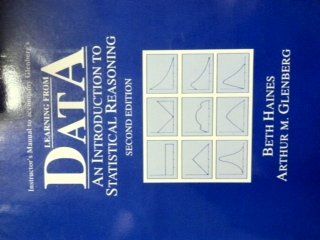
Learning from Data An Introduction to Statistical Reasoning
Learning from Datafocuses on how to interpret psychological data and statistical results. The authors’ review the basics of statistical reasoning to help students better understand relevant data that affect their everyday lives. Numerous examples based on current research and events are featured throughout. To facilitate learning authors Glenberg and Andrzejewski: Devote extra attention to explaining the more difficult concepts and the logic behind them. Use repetition to enhance students’ memory with multiple examples, reintroductions of the major concepts, and a focus on these concepts in the problems. Employ a six-step procedure for describing all statistical tests from the simplest to the most complex. Provide end of chapter tables to summarize the hypothesis testing procedures introduced. Emphasize how to choose the best procedure, with a discussion of procedure choice in the examples, problems that require choosing the procedure, and endpapers that provide guidelines for choosing procedures. Focus on power with a separate chapter and power analyses procedures in each chapter. Discuss the rationale for why emphasizing random sampling from populations is emphasized in the classroom but not in actual experiments. Provide detailed explanations of factorial designs, interactions, and ANOVA to help students understand the statistics used in professional journal articles. The new edition features a more user-friendly approach: Designed to be used seamlessly with Excel, all of the in-text analyses are conducted in Excel, while the book's CD contains files for conducting analyses in Excel, as well as text files that can be analyzed in SPSS, SAS, and Systat. Two large, real data sets integrated throughout—one focusing on the effectiveness of Zyban and gum on smoking and the other on the effects of children on marriage